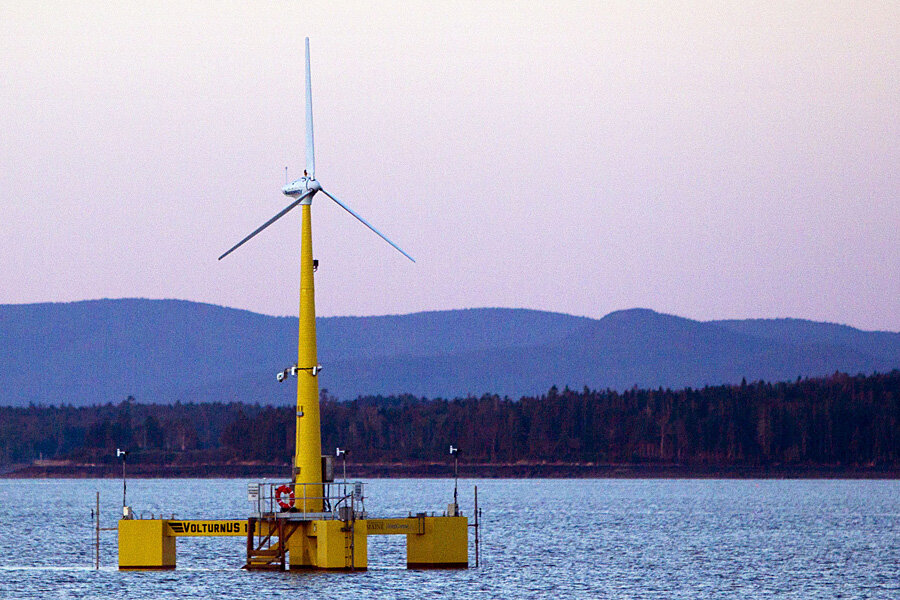How barnacles put the 'farm' in offshore wind farm
Loading...
No one doubts that the rotating turbines of offshore wind farms can hazardous to avian life, and that the devices’ constant whine can scare off some marine mammals from traditional habitat.
Now there’s new evidence that at least some sea life can actually benefit from these structures. Researchers from Britain, the Netherlands and the United States report in the new issue of Current Biology that wind farms can be rich sources of the foods that sustain harbor seals.
The report says the team studied wind farms in the North Sea and found that they serve as artificial reefs that become bases for barnacles and other crustaceans. These crustaceans, in turn, attract hungry fish, which in turn attract hungry seals.
Speaking to The Independent, Dr. Deborah Russell, the lead researcher, explained why this works. The base of each wind turbine is hard, not soft like the sea floor. As a result, she said, “Things like barnacles and mussels will settle on hard structures and then that in turn will attract other marine species, and it builds up over time.”
Russell, of the Scottish Oceans Institute at the University of St. Andrews, said these other species include fish such as cod and whiting, which are delicacies for harbor seals.
But how does Russell’s team know that the seals are availing themselves in this rich smorgasbord? In 2008 researchers attached global positioning system (GPS) tags on gray and harbor seals in the North Sea, and have since been tracking the mammals’ movements. (Related Article: U.S. Announces Major Offshore Wind Auction)
They found that 11 of the seals visited two North Sea wind farms -- the Alpha Ventus off the coast off Germany and the Sheringham Shoal off Britain. The report said several of these tagged seals repeatedly visited these artificial reefs.
“The data strongly suggest that these structures were used for foraging and the directed movements show that animals could effectively navigate to and between structures,” said the report, which was funded in part by Britain’s Department of Energy and Climate Change.
In fact, one seal returned regularly returned to the British wind farm, Russell said. “I was shocked when I first saw the stunning grid pattern of a seal track around Sheringham Shoal,” she said. “You could see that the seal appeared to travel in straight lines between turbines, as if he was checking them out for potential prey and then stopping to forage at certain ones.”
In an interview with the Christian Science Monitor, Russell said the study also shows how seals can tailor their life patterns to their habitat. She said it was “surprising to see how much their behavior was affected by the presence of these artificial structures and how they could actually adapt their behaviors to respond to that.”







